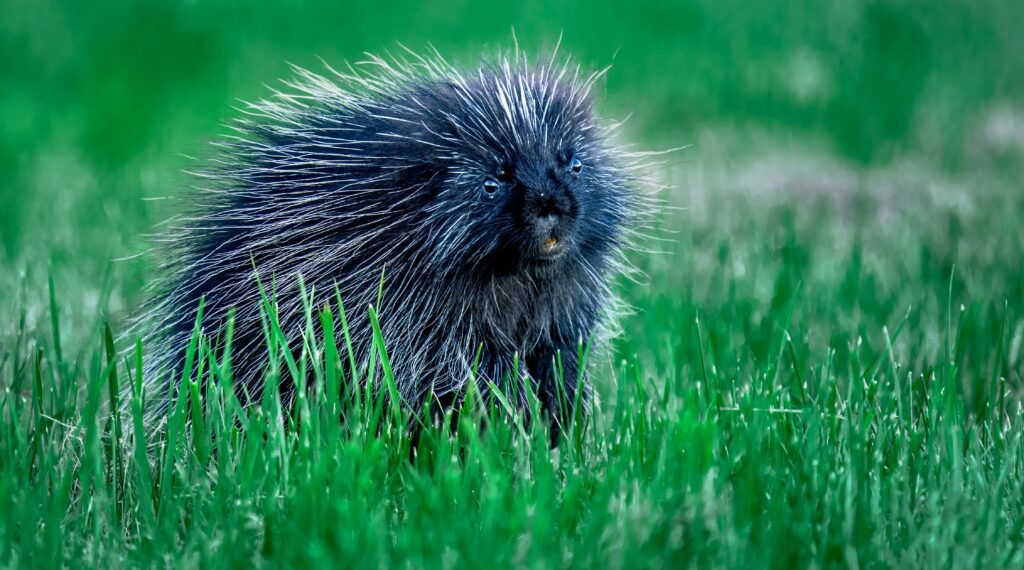Stonecoast Review
The Literary Journal of the Stonecoast MFA
What to Do with Rage

By Sydney Lea
The icy morning finds me in bed, engrossed in a book of John Singer Sargent’s watercolors. The thought of staying under the covers all but overwhelms me. Once a reticent sun crept over the hills, though, our dogs began their woofing and baying. There’d be no sleeping in.
Now, having taken them out to empty themselves and romp, I’m daunted. The first of December: I stand in the blow, beholding a too-early snowfall. I steer the dogs away from our pond, whose ice won’t quite hold them yet.
It supports other weights: I see the prints of a pigeon-toed porcupine, and reflect on Sargent’s crucified Christ, how His feet alone convey the pain of the scene. Then I come back to reality, thinking of how that animal would gladly spare as many quills from its cassock of spikes for our dogs. The very idea brings this gelid wind deep into my soul. I consider the hours I’ve spent in the past year either extracting the quills from our pets’ snouts or waiting hours on end after our vet has sedated one or the other and begun the professional removal service. The fee is always high, but that’s hardly the worst of it.
This creature has shunned our Havahart trap since September. We’ve often fooled porcupines with melon, apple, or bark steeped in saltwater. This one, however, keeps mauling the boards on our backyard porch, studiously ignoring whatever bait we’ve decided on.
As I shiver, I visualize another Sargent: Mountain Stream shows a placid day of summer. Just now I long for such calm, the cold and the tracks having moved me to rage. It may be the same obliquely related rage that moved a neighbor to fly a Fuck Joe Biden flag. Whenever we pass his place, we always pray for no wind to be blowing, so the venomous slogan will be hidden in the fabric’s folds.
If our seven-year-old grandson were with us, he’d have no trouble parsing the words of the brutish sentence. Precocious, he might even sense the meaning of some other words, ones from an old-time critic about Sargent, the painter I’ve been pondering this forenoon: “His every touch was individual and conveyed a quick unerring message from the brain … a kind of shorthand, but magical.”
But why do I recall those words just now? I guess it’s that my mind, antic as ever, keeps vaulting from one sign to another, and seeing in each, yes, a kind of shorthand: the hideous flag, the porcupine’s tracks on snow, the deftness of a painter I deeply admire—all are terse and contained, yet, whether it does or not, I allow each to speak volumes.
There’s an NRA sticker on the neighbor’s pickup. I loathe that crowd, but our profane neighbor’s family has lived here since before our town was founded. And believe me, I’ve thought about shooting our spiky invader.
However you look at it, fellow feeling can be a challenge. To see those gnawed boards makes me so angry I could rip one up for bait. Maybe that would get him! I’d take him to that rotting old lumber pile by the river. Let him chew there all he wants!
I recall how I was taught as a child to revile the sin but to love the sinner, so I tread thin ice here. Perhaps we all do. I know I shouldn’t detest anyone or anything for being what it is. And I know I force analogy.
But I’d gladly learn our nemesis was a corpse.
Poet, essayist, and novelist SYDNEY LEA has penned more than twenty books in his storied career. Though he was accorded the honor of Vermont poet laureate (2011–2015), a rich Maine heritage has always informed Lea’s work. Recently, he connected with Stonecoast faculty member Susan Conley, who studied poetry with Lea at Middlebury College and wrote her first book, a collection of poems, under his mentorship, to discuss those literary influences, his views on craft, and what makes for great storytelling. Conley is the author of five books including the novels Landslide and Elsey Come Home and the memoir The Foremost Good Fortune.
A collection of Lea’s essays, Such Dancing As I Can, was released by The Humble Essayist Press last fall. His latest novel Now Look, was released in May by Down East Books.
This story originally appeared in Stonecoast Review Issue 21.
Photo by Eduardo Gorghetto